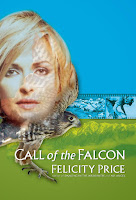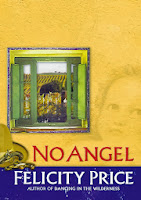http://www.stuff.co.nz/the-press/opinion/perspective/9089709/Performing-arts-precinct-will-suffer
The Town hall debate needs clarity of thinking instead of
the current emotional knee-jerk reaction to supposed voter preferences or
“architectural integrity”. What’s the point of architectural integrity if
people have very little use for the buildings saved?
Save the Town Hall auditorium by all means for its iconic
status, its world-class acoustics, its heritage, its wonderful Rieger organ,
its place in our hearts. But now is the time, after 40 years use has revealed
their inadequacies, to forget about the impractical James Hay Theatre, the
unpopular Boaters Restaurant, and the unnecessary Limes Room and associated
function rooms, which will be replaced in due course by function rooms at the
new Convention Centre and local hotels.
The Council’s proposed vote in favour of keeping the lot
will deprive Christchurch of the Arts Precinct it not only deserves but badly
needs. It was all there in the CERA Blueprint – a new, purpose-built concert
auditorium, a new Court Theatre, a new Music Centre, and a home for the CSO and
for the city’s other resilient arts organisations that have managed to thrive
despite events of the last three years.
How has this come
about?
The Council “consulted” on saving the Town Hall during
consultation on its Annual Plan (LTCCP). The heritage lobby was vocal in saving
the Town Hall in its entirety, without really understanding what they were
demanding, other than preserving an iconic building. The arts community - those
most affected – were not vocal and have not been able to have their say on
using a large chunk of the planned Arts Precinct money to save the James Hay
Theatre, which they rarely, if ever, use. And it’s difficult to dissent anyway
when the Council is one of your funders.
The Council tells us it has looked at all the options and
saving the whole Town Hall complex has been agreed as the best option. But has
it really looked dispassionately at the other options? It seems that the best
option of all – retaining the Town Hall auditorium with an iconic new foyer
designed by original architects Warren and Mahoney (or by Sir Miles Warren if
he would agree to it) – has not been afforded the public discussion it deserves.
This option was considered by councillors late last year and
was recommended by the staff, but later in the committee meeting an impassioned
plea by Sir Miles Warren to save the whole thing to preserve its architectural
integrity won over the councillors’ hearts. I’m not sure if the auditorium and
grand foyer option was ever considered by the full council.
It’s hard to know why the council is so in thrall to Sir
Miles Warren’s pleas. His iron will is going to leave the city’s arts community
with half the precinct they need. The full council has the opportunity this
week to decide if they’re giving the arts a fair go.
They’ve only got this one chance to get it right and, even
though many of them won’t be councillors next year to see their legacy fulfilled,
such a significant decision should not be rushed through without due
consideration of all the alternatives – especially alternatives that would
provide significantly more benefit to the arts.
The $80 million
win-win option
Often when there’s a major conflict within an organisation
or a community over an issue, the most sensible solution is to look for a
compromise, preferably one where everybody wins to some extent.
Last year, council staff proposed such a solution – an
overwhelmingly sensible proposal that, for a preliminary estimate of $70 to $80
million, would save and fully restore the Town Hall auditorium, provide it with
a fitting foyer, and thereby allocate the remaining $80 million (out of a total
budgeted now for the Arts Precinct of $158 million) for music and theatre
venues for the city’s major arts organisations.
The Council commissioned Warren and Mahoney to design and
report on the aesthetics and practicalities of retaining the auditorium only,
with a new entrance and gathering space that would have sufficient grandeur and
design impact to provide “a sense of place”. Included in the proposal was
advice from structural and acoustic engineers. The design, published in a
committee report on the council’s website, kept part of the foyer in its
existing location and created a new entrance to the east (Colombo Street) that
gave it, according to the report by Warren and Mahoney managing director, Peter
Marshall, “a sense of arrival in conjunction with existing” [structures].
“We
are also of the opinion that the Auditorium could function alone, with modifications
that we have suggested previously, and still have a strong architectural and
urban presence,” Peter Marshall wrote. “This opinion is shared by Sir Miles
Warren.”
Sir Miles obviously changed his mind because he turned up at
the meeting and pleaded with councillors to retain the whole complex.
What is wrong with
the James Hay Theatre?
With 1006 seats, the James Hay is similar in size to the 1250-seat
Isaac Theatre Royal, which is currently being restored. However it has none of
the grandeur, it has a number of flaws (such as acoustics, raking of the seats,
backstage layout, fly-towers, staging) and is generally disliked by theatre and
music companies. The Royal New Zealand Ballet, the opera and Showbiz have all
rejected it in favour or the Isaac Theatre Royal.
A city this size does not need two auditoriums of almost the
same capacity. Keeping it means that the sort of music and drama venue we do
need (around 500 to 600 seats) is unlikely to be built.
What will the Arts
Precinct look like?
So far, as far as I’m aware, the only agreement on tenants
of the new Arts Precinct (possibly because it’s so restricted by the small $32.5
million budget) is that it will include a new Court Theatre and a Music Centre.
Proposals for it to be the home of the CSO and other arts organisations have
yet to come to fruition.
The Arts Precinct is supposed to extend, under the council’s
plan, from the Town Hall to the Isaac Theatre Royal and suggestions are that
the buildings will be located close to each other, on or near Armagh Street, at
the rear of the Isaac Theatre Royal building.
The Court Theatre building will be used – like the current
one – almost every day of the year. It has been estimated to cost around $32
million, plus the cost of the land. This, like all proposed projects and costs
in the precinct, is by no means definite but it is indicative of the size of a
complex The Court currently has and will need in future: a 400-seat theatre
plus a smaller studio theatre, a joint foyer and booking office, at least one
rehearsal room, as well as the other theatre essentials like space for set
design, wardrobe and offices.
The Music Centre building is proposed to include studios,
music rooms and storage, and a 350-seat concert chamber.
There has also been talk of an outdoor performance space in
the Arts Precinct.
The city’s music, theatre and other performance people have
often said that there is a desperate need for a smaller music/drama/dance
venue. About half the size of the Isaac Theatre Royal and James Hay Theatre,
the theatre would be a purpose-built, 500 to 600-seat auditorium suitable for
both “plug-and-play” bands and amateur theatre groups in search of a venue - rock
bands to Repertory.
The Arts Precinct is also supposed to house facilities for
the CSO that could include offices and storage, but probably not a rehearsal
room because of the very large size requirements. Before the earthquakes, the
CSO had acquired a rehearsal room and office space in the Salvation Army
Citadel near the Town Hall, but this is no more.
It is also hoped by some that the Arts Precinct will become
a hub for the city’s thriving arts, such as Showbiz, local ballet, The Body
Festival, the International Buskers Festival, The Press Christchurch Writers
Festival, the Arts Festival and SCAPE. Galleries and fine arts could stretch
around the corner as far as Christchurch Art Gallery.
Arts organisations are always short of money, so the sort of
subsidised rent that a council-owned Arts Precinct hub could provide for them
should help drive the sort of creative ambience that would thrive with activity
and ideas.
And where the arts go, cafés, bars and restaurants follow.
 Joining the New Zealand Romance Writers online community has opened a new window of opportunity for me - there are some wonderfully helpful people there like Shirley Wine, who writes Rural Romances as breathtaking and unique as the land that inspires them. Shirley has been generous with her advice and has hosted my first guest blog on her website-linked blog: http://www.shirleywine.com
Joining the New Zealand Romance Writers online community has opened a new window of opportunity for me - there are some wonderfully helpful people there like Shirley Wine, who writes Rural Romances as breathtaking and unique as the land that inspires them. Shirley has been generous with her advice and has hosted my first guest blog on her website-linked blog: http://www.shirleywine.com

